In the endless expanse of the far future multiverse, there is only one constant. On a billion planets in a million realities, swarms of tanks, mechs and aircraft slug it out in brutal combat. This is Hypersteel Nightmare, a new tank skirmish game from Epigram Games that promises satisfyingly crunchy, intelligent gameplay for treadheads in every reality.
And guess what? It’s bloody good fun!
Before diving in to review, thanks for Epigram Games for sending a copy of Hypersteel Nightmare to us for review!
One half of Epigram Games is Goonhammer writer Lupe. Lupe did not contribute to, input into, or have oversight of, this review.
Hypersteel Nightmare takes the most exciting part of far future warfare (tanks, planes and mechs!) and spins a game out of the idea that what we really want is quick, fun and interesting small scale battles with an exciting amount of crunchy rules and a wild amount of customisation. I was pretty on board with this idea from day one, but if you aren’t already you should be – this is a game where you’re going to roll dice, blow shit up, zip around the battlefield outflanking and outthinking your opponent and shoot the shit out of their lovingly converted tanks. Spoiler for the rest of the review, but I think you’re going to enjoy the experience – whether in beers and talking shit mode or fighting out tense, hard fought battles in hard competition.
What’s All This?
Hypersteel Nightmare is all about the tanks, mechs and planes, and is a mini-agnostic, multi-scale game. Just about any imaginable miniature range will do, though the ideal play scale is between 6mm (Epic) and 15mm (Flames of War). There’s a huge range of miniatures you could use here, from BattleTech to Victrix to Legiones Imperalis, (even with some notes on using big ol’ 28mm tanks too). Epigram handily suggest a few ranges – Lazy Forger and Vanguard Miniatures both feature as illustrations in the rulebook, with Epigram’s own range coming soon – so it’s highly likely that you can get playing this based on what you already have in your collection.
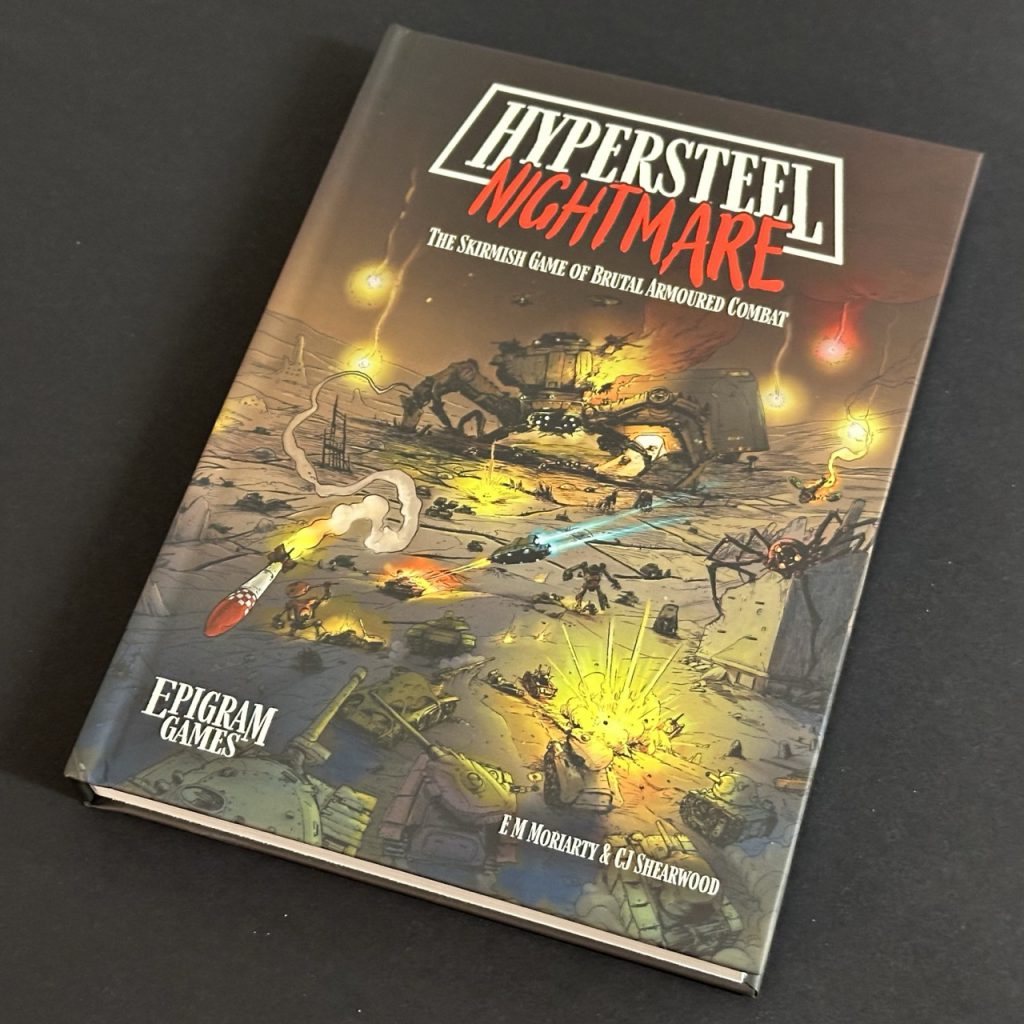
That’s good, because it means all you need to pick up to get playing is the rulebook, and it’s a bloody nice rulebook! To be honest when I thought “first book from a new designer” I kind of thought – very unfairly – we’d be in poor rules layout and cheap illustration territory, but we definitely aren’t here. 190 pages of beautifully laid out and sensibly ordered rules, army construction and example lists, illustrated throughout with images, clear diagrams and lovely/explosive tank-based marginalia. It’s a very nice book, and given that that’s all you need to get going, almost enough to make me recommend it on that basis alone.
Playing Hypersteel
But that would be wrong! I should, and will, recommend it on the rules, because they’re great.
Hypersteel Nightmare is an orders-based alternate activation game, where players issue orders to a few (between one and three) of their units and enact the orders before handing over to their opponent. That’s pretty straightforward – orders are things like “move”, “shoot” “beat the shit out of your opponent with an axe” (okay, that one is just called “assault”) – and implementing each order is simple, with examples, diagrams and a level of rules writing clarity you won’t find in every game on your bookshelf.
There’s a couple of things that set Hypersteel Nightmare apart from other similar games. The first big one – my second favourite – is just how those orders are issued. Models can recieve multiple orders, allowing you to move, shoot and bugger off out of line of sight all in one activation. That’s balanced out in list building (more later) but also in opportunity cost. You might get one tank doing exactly what you want, but your opponent might be setting up much more intricate plans, spreading orders out to get multiple units into good positions before unleashing hell. It’s a really simple thing, but I like it a lot and even surprised myself in solo test games with how that can play out on the battlefield.

The ability of opponents to interfere with your plans is possibly one of the trickiest bits of game design to get right – the oft-chased but often missing element of “friction.” Unlike strict IGOUGO games where you’re not really able to disrupt your enemy unless killing them off, Hypersteel Nightmare adds my second favourite mechanic – Panic. I think Panic is what’s going to end up defining most play experiences (positively!) because it’s a lovely little mechanic with easily implementable effects and clear impact. Put simply, you can inflict Panic on opposing models, representing the buttoned-up tank commander incapable of reacting as you the commander might wish, which then converts orders into Panicked version of them. The flanking manoever you’re setting up gets converted under fire into a retreat, or the decisive assault through the frontline into artillery tanks ends up a confused charge into the nearest threat. Panic is going to mess with your plans, and inflicting panic on your opponent is a vital tool to win games. I play a lot of games that try to do “friction” in some way, but usually it ends up something like a leadership check or a binary can/can’t like battleshock – rarely forcing your hand in interesting ways and so Hypersteel stands out for doing friction right.
You’re going to be doing a lot of combat, whether choppy choppy or shooty shooty (or bomby-bomby if you’re taking planes), so it’s a relief that combat is simple and clear. You’re rolling a satisfying amount of dice, modifiers are clear and obvious and the effects are easy to work out. This doesn’t mean that you’re losing detail – fire arcs, weapon stats, critical damage, morale and “wounds” give a suitable level of granularity that balances well with speed of play. Combat interacts with panic so that (nearly) every time you shoot you’re going to do something, with all but the very very worst luck.
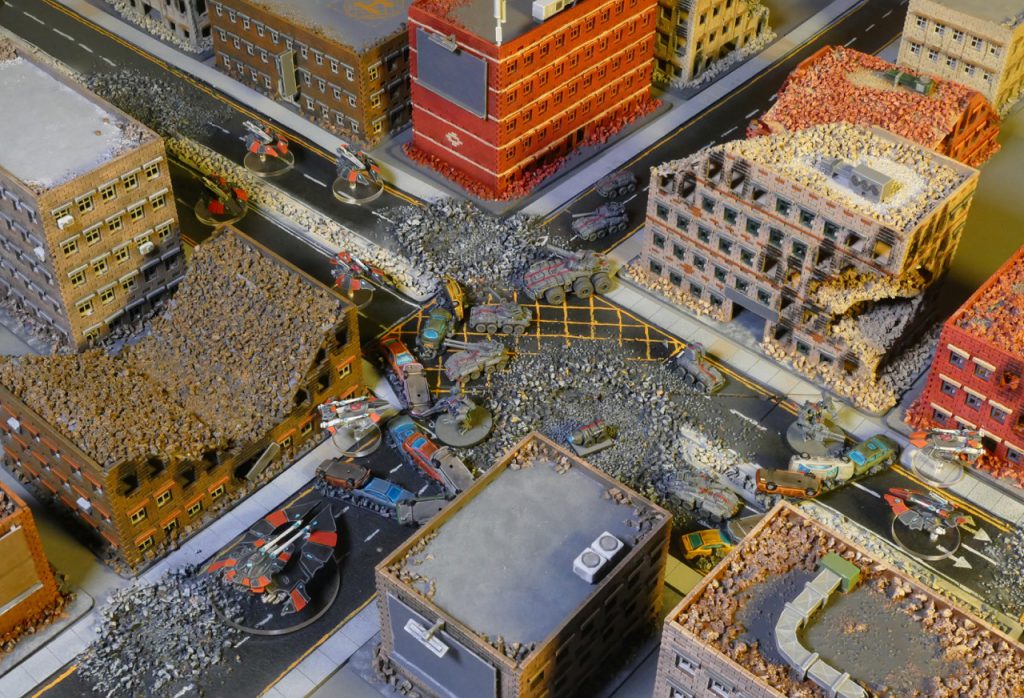
Speedy but granular could be the watchword – tanks, stats, weapons, all have a range of options but they’re simple to enact and work out on the table. A sponson has a different arc to a turret, but they should, right? Very small weapons (like pintle mounts) are entirely abstracted out, letting you focus on the big guns – there’s a lot (31!) of weapon options there too, but they’re all chunkily different and offer very different choices. The game is clearly designed with a lot of levers to tweak, places where tanks and weapons and even terrain can be differentiated and have impactful differences in play experience – but none of it is complicated!
Your Hypersteel Nightmare
The weapon customisation is just the start. Hypersteel Nightmare equips you with some basic unit templates, then offers up huge customisation through weapons, upgrades and different categories of unit. I think a lot of the fun here is going to be creating weird and wonderful tanks according to your own wild ideas.
Sometimes I’ll balk a little at wide-open customisation like this because it often means picking between the obviously best weapon or the coolest one that is honestly a bit shit. As far as I can tell from my solo games though, all that customisation is meaningful and will change your play experience. Taking more weapons changes how your units fight and feel on the tabletop – a historical inspired force (like the poor bloody T34s fighting my toe tanks, content warning body horror) will have to act significantly differently to an LI modelled army with sponsons, pintle weapons and hull mounts galore. Your customisation options aren’t just point buys and cosmetics, but will substantially change how your force feels to play and what you can do with it, and that’s really cool – every army being a modelling and converting opportunity will suit many people (including myself!) down to the ground.
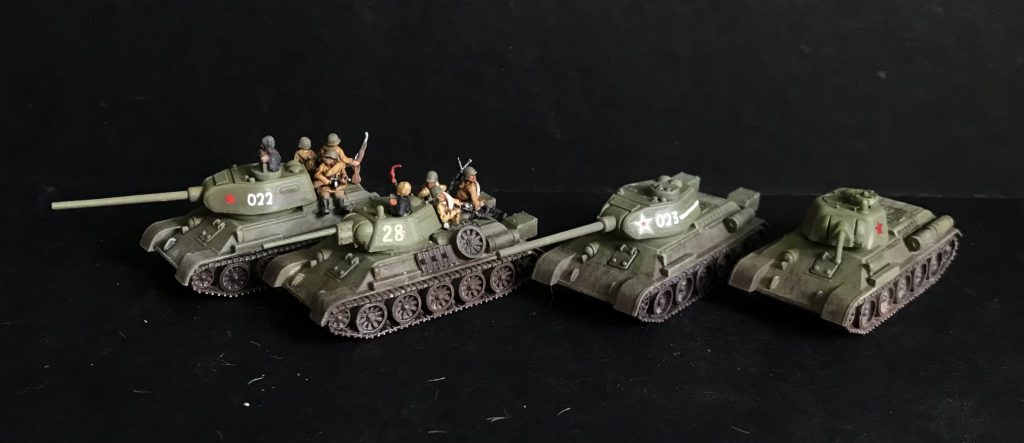
Unit type is also significant. My first test games were with just tanks, but in writing the review I thought I’d bring in some mechs and planes too – and again, the rules are all very straightforward and easy to play, but bring real and substantial differences to your gaming experience. Taking a VTOL to hover around inflicting panic, or hyper-mobile mechs swinging anime swords around opens up even more options, but they all work within the core framework. There’s a lot of games at smaller scales where various types of unit feel quite disjointed, or operate according to so totally different rules that you’re learning three complete sets of movement, shooting, etc rules for your army. Not so here – and I think that’s a lesson that could be taken from Hypersteel Nightmare and applied pretty widely elsewhere.
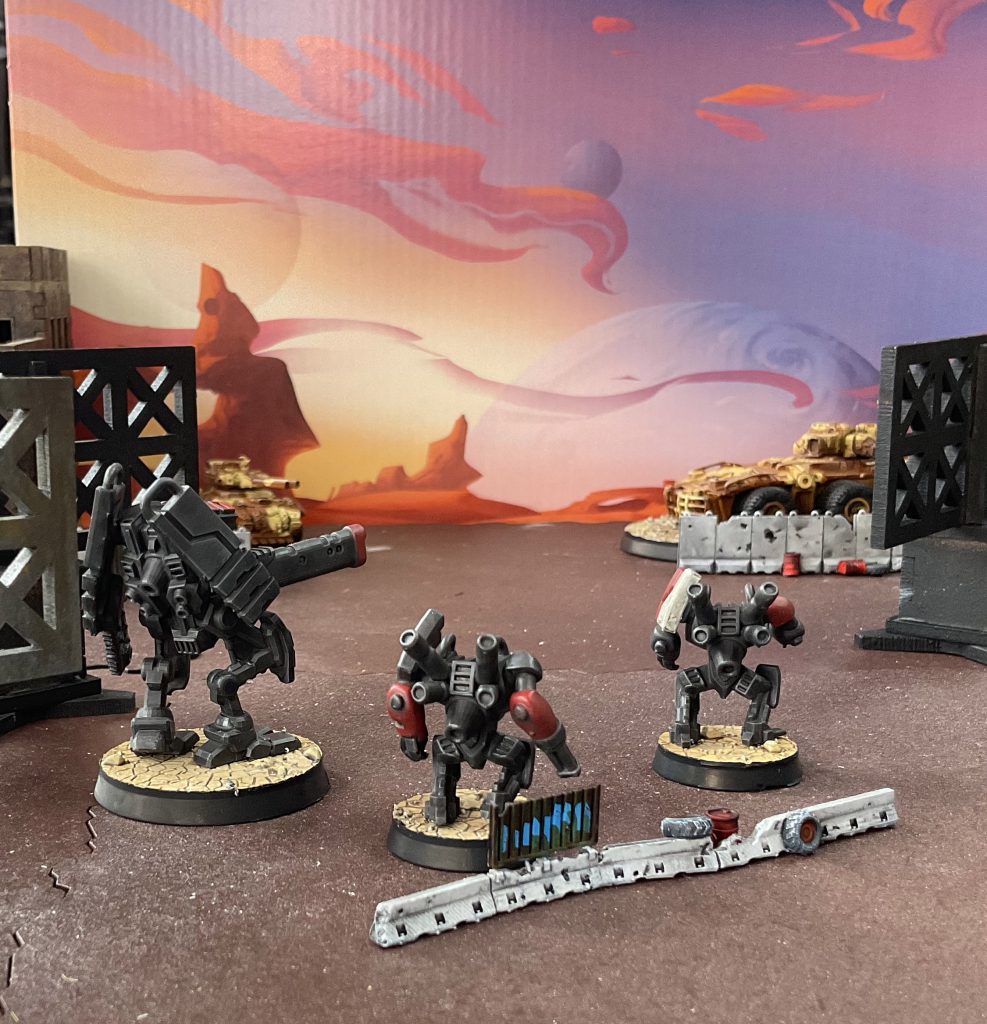
Are There Any Nightmares Out There?
I don’t like my reviews to be hagiographies so I put serious effort into scrutinising things I don’t like, or think that people might find difficult, honest! I think a potential difficulty here comes in that customisation. If you’re intimidated by options (though of course that also means huge, endless opportunity if you love theorycrafting) there are an awful lot here. 19 unit types, 31 weapons, 56 upgrades, 9 compromises – the possibilities and customisation is pretty much endless. If you have decision paralysis that’s a cliff-edge to get over.
However, it’s clear that the designers picked up on this, as they provide four template lists with a variety of unit types to allow you to dive right in. I think it’s likely that starting out with these is a good idea – a couple of games and you’ll start thinking “well, what if I added this upgrade, or put this weapon on that hull?” and then you’re off and away with the customisation. Don’t do what I did and find out that most of what you’ve painstakingly built is pretty bad (short ranged fixed arc weapons, bad???? quelle surprise).
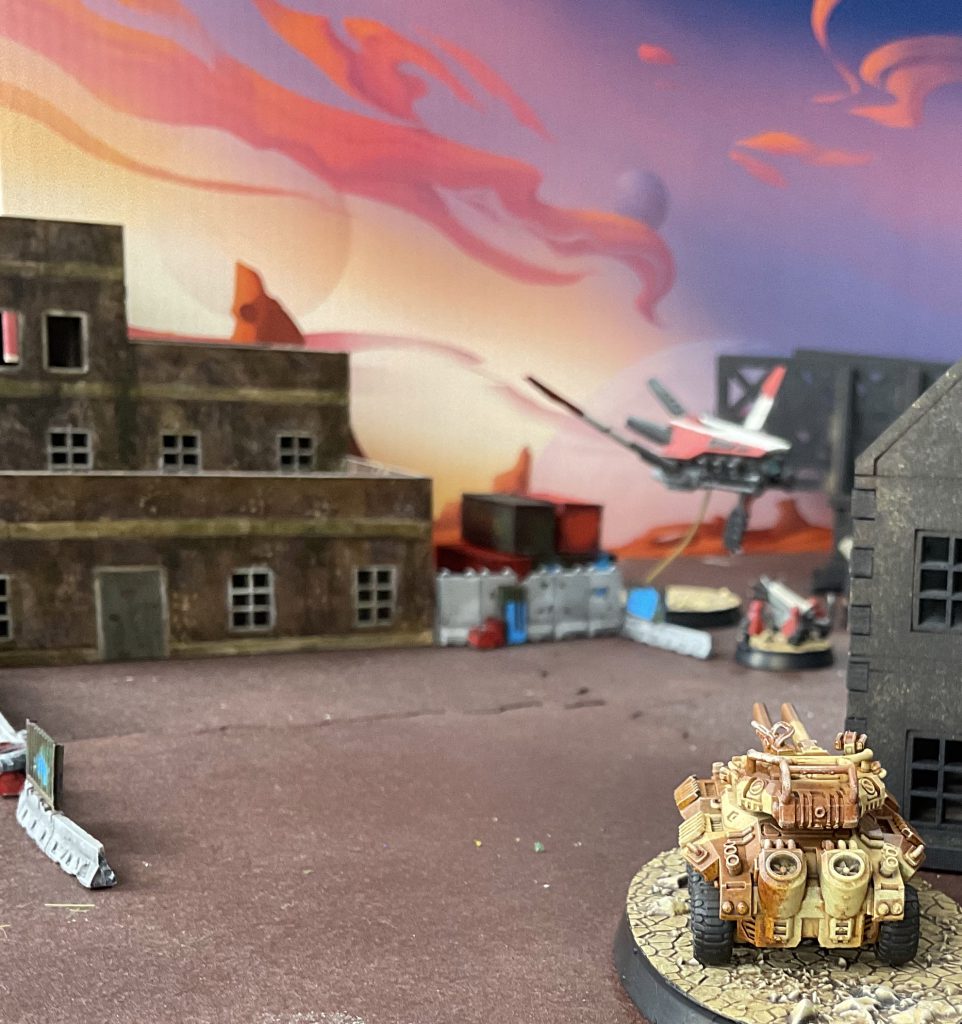
Variety in everything is probably another watchword – this might be a thing purely for me, but playing with every customisation lever thrown to “maximum options” will mean there’s a lot going on. Terrain is a good example – the infinite variety of far-future terrain has interactive rules that are simple to understand and will change up the play experience, but adds another layer of things to remember on the board.
I think really this this is my one issue with the game, you can model everything with clear, simple rules. You don’t have to, but i felt like I should for some reason, which left me feeling a bit intimidated. When I stripped out terrain to purely LOS blocking I had a lot more fun. I think the rewarding path here will be to build up, playing with premade forces, then customised ones without additional abilities, then full forces with terrain. No individual layer of complexity and variety is difficult to process, but all combined could leave you with a lot of special rules on the table.
Tanks All Round
I think this is a great game that will be a staple of my “hey, fancy playing this instead?” repertoire for a long time to come. There’s a huge amount of fun to be had here and the core game is simple enough to play in the most relaxed settings with friends on a pub table while having the detail and depth to play out involved narrative games, pickups and competitive settings while inspiring batshit conversions or giving you a use for all sorts of smaller scale vehicle models you’ve got in your collection. The massive, really quite astonishing, achievement of having such a huge range of customisation options that interact simply and easily on the table is fantastic and will allow for a preposterous amount of replay value.
However you play games, I think there’s something here for you and that something is satisfying, surprisingly deep, vehicle based carnage, so I reckon you should go get it. If you’ve got tiny tanks, perhaps for a game that wasn’t quite as fun as you thought it would be, here’s the game you’ve been looking for. If you haven’t, go buy some and play it anyway.


